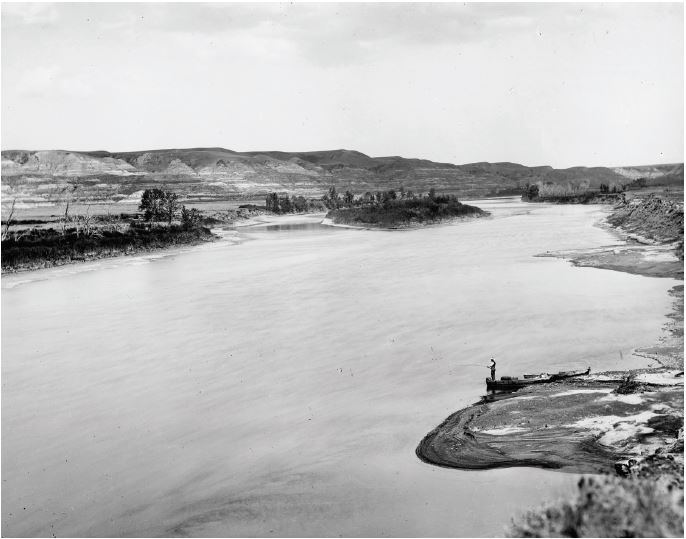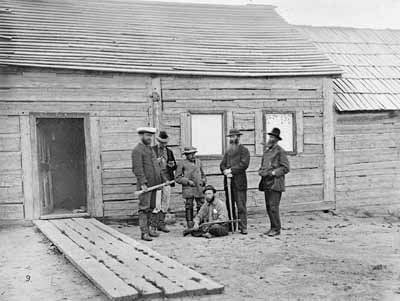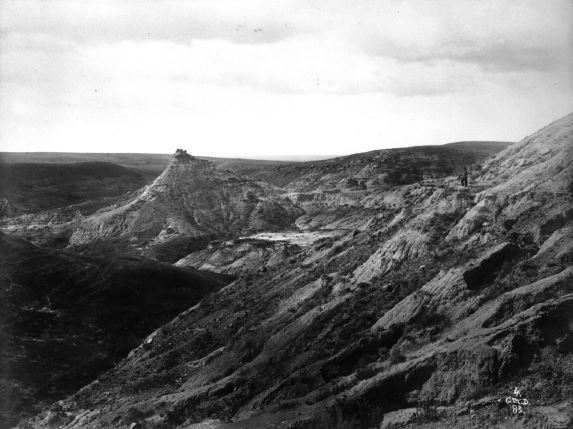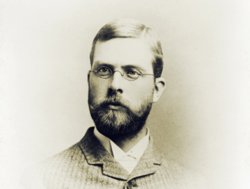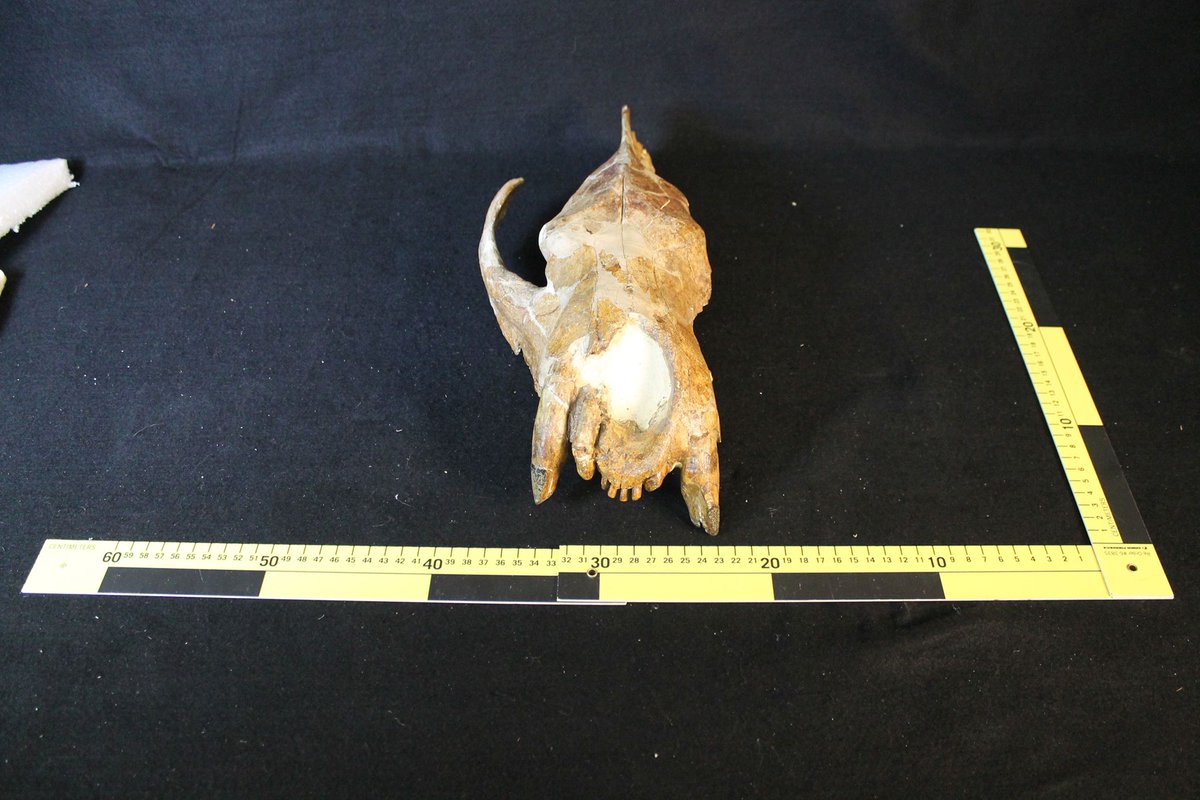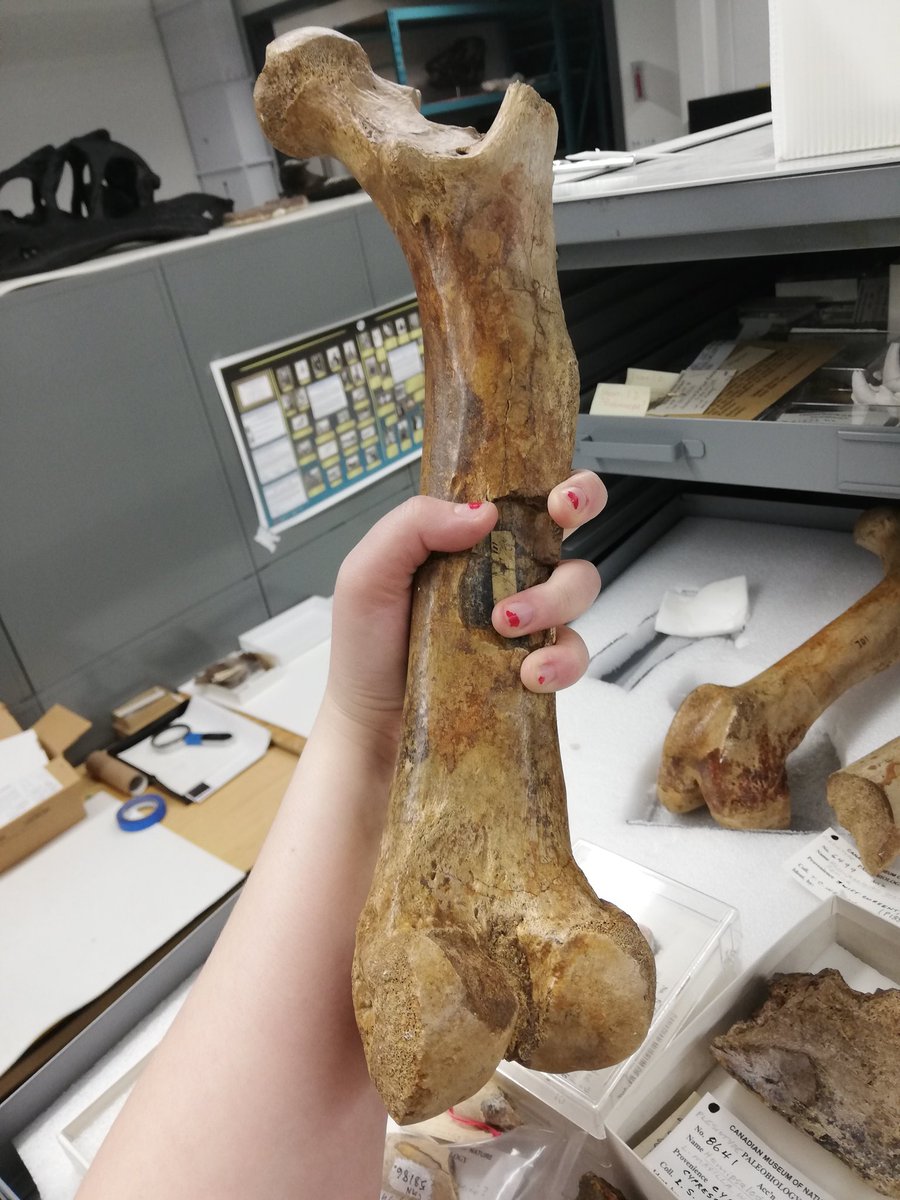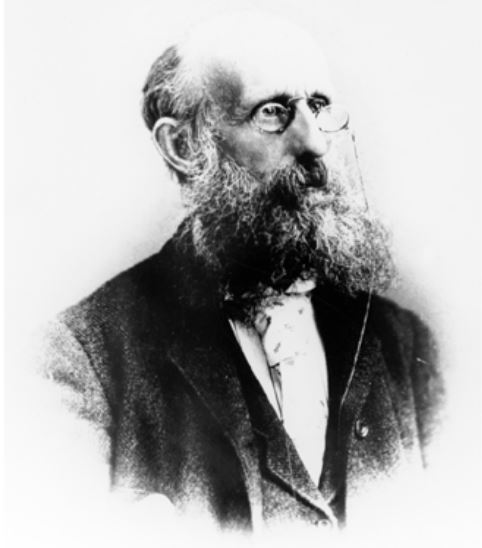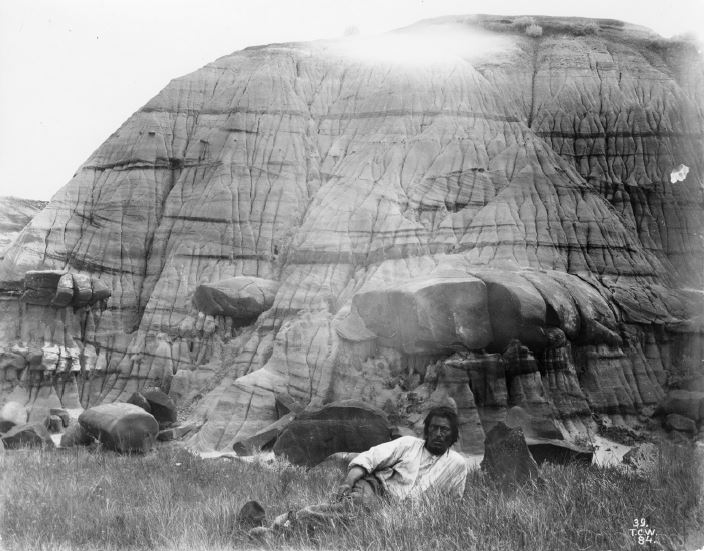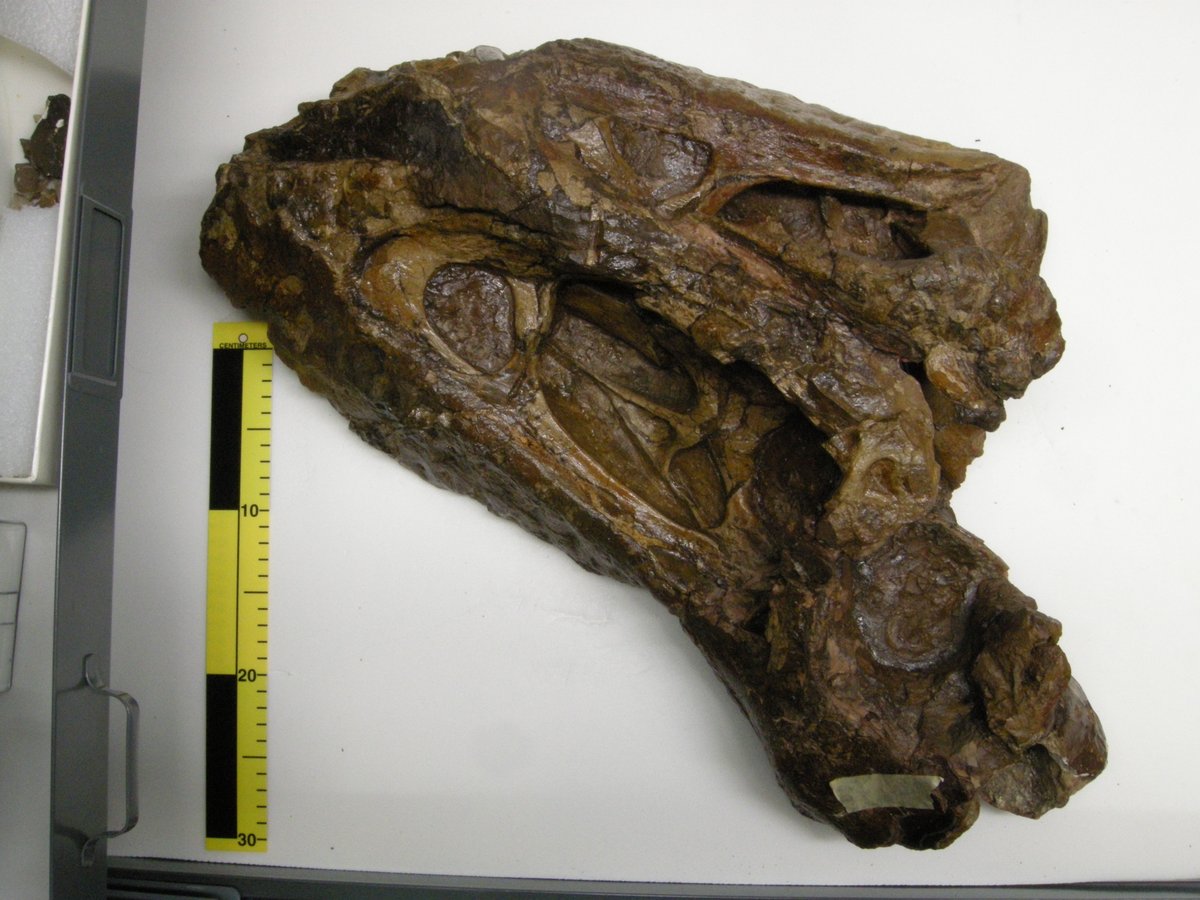My paper with @Jordan_Mallon and Darren Tanke on early dinosaur hunting in western Canada was published this morning! This is the culmination of half a decade of volunteering at the @MuseumofNature , and I am so proud to share it. DM for a PDF. (thread)
https://doi.org/10.17704/1944-6187-39.1.184">https://doi.org/10.17704/...
https://doi.org/10.17704/1944-6187-39.1.184">https://doi.org/10.17704/...
In the late 1800s, the Geological Survey of Canada was pretty new to fossil hunting. They& #39;d been founded to look for natural resources in newly-stolen crown lands, and they were lucky if they found vertebrate fossils accidentally. #CMNpalaeo
The US was another matter though. The "Bone Wars" between Cope and Marsh (Canadians are #TeamCope btw) meant that the museums there were filling up with impressive dinosaur skeletons. Without a thorough exploration of western Canada, the GSC couldn& #39;t compete.
In 1873-74, the USA and Canada set out on a joint expedition to define the border between the two countries. An undefined border was making it difficult for the governments to control Indigenous groups. A thorough survey was also needed to take stock of natural resources.
On this expedition was George Mercer Dawson, newly graduated and signed up against his will by his father, Sir John William Dawson. He was promised to come out of it with a GSC job and future field work in British Columbia (where he actually wanted to visit- who could blame him).
G. Dawson was short in stature (third from the left) due to childhood tuberculosis. He absolutely loved the field though, and was usually the first to make it to the tops of hills. (photo: © Geological Survey of Canada / Bibliothèque et Archives Canada)
In 1874 the Boundary Commission made it to what is now Grasslands National Park in southern Saskatchwan. He collected hadrosaurid vertebrae, trionychid and compsemydid turtle shell fragments, and gar fish scales. (photos: Christison et al. 2020)
No more Cretaceous vertebrate fossils would be collected by the GSC until 1881, when John "Darling of the Conservative Party" Macoun picked some up on a botany expedition. These include turtle, champsosaur, and dinosaur material, but no one ID& #39;d them until this paper.
Macoun earned his nickname by telling the government what they wanted to hear: all of western Canada was prime farmland, so "less desirable" (less white) immigrants could settle there. He was therefore partially responsible for the Dust Bowl catastrophe in Canada.
in 1883 G. Dawson and his assistant R. G. McConnell did an extensive survey of southern Alberta, extending into Saskatchewan and BC. One site they collected from was Fossil Coulee (pictured). Everything they found was lost when they ship carrying them caught fire (no one harmed).
1884 was a big year! J. B. Tyrrell (à la @RoyalTyrrell
fame) collected the first Albertosaurus skull (then Laelaps) ever. It was so impressive that the GSC decided they needed to plan an expedition specifically to look for big dino bones (this wouldn& #39;t be till 1888/9).
fame) collected the first Albertosaurus skull (then Laelaps) ever. It was so impressive that the GSC decided they needed to plan an expedition specifically to look for big dino bones (this wouldn& #39;t be till 1888/9).
Meanwhile GSC lapidary and palaeontologist Thomas C. Weston was hunting for mammal fossils in Cypress Hills, Saskatchewan. The newly-built Canada Pacific Railway made it easier to ship home big specimens like Hemipsalodon grandis @MuseumofNature
#WickedFossilMammals
#WickedFossilMammals
Weston visited Scabby Butte that summer, and was moved to poetry by the beauty and the sheer number of vertebrate fossils there. He only collected fossil wood at the site though. Read all about his poem here: @Palaeopoems https://palaeopoems.com/2019/03/28/thomas-weston/">https://palaeopoems.com/2019/03/2...
Virtually all of these GSC expeditions included hired Indigenous guides. Their expertise made them invaluable; not only did they keep the GSC scientists alive, they led them to fossil sites and presumably collected many of the specimens. Pictured: a guide named Joe at Ross Coulee
Unfortunately not much is known about most of these guides. Scientific reports exclude them, and memoirs by the GSC scientists often use racist language if they mention them at all. It is unknown which Nations each guide were from, since the GSC scientists seemed uninterested.
One of these guides was Joe Lowry (probably not the same Joe pictured above), a cowboy with a pony named Billy. He apparently exclaimed, "I& #39;ve found that big bone you wanted" as he discovered a Megoceras femur in the Cypress Hills while accompanying Weston in 1886.
In 1888, Weston was sent out west again, this time with the express purpose of looking for dinosaur bones along the Red Deer River. After several delays, his boat was ready... and promptly crashed 7km upstream from where they launched. #FieldWorkFail
He landed on the farm of the Mackenzie family. Mr. Mackenzie was likely Métis or Cree, as he had attended the Red River Mission School in WInnipeg. It was the first residential school in western Canada. Learn more about it here:
https://open.library.ubc.ca/cIRcle/collections/ubctheses/831/items/1.0097815">https://open.library.ubc.ca/cIRcle/co...
https://open.library.ubc.ca/cIRcle/collections/ubctheses/831/items/1.0097815">https://open.library.ubc.ca/cIRcle/co...
Roderick "Mac" McKenzie offered to build Weston a new boat and accompany him on his expedition the next summer (1899), and Weston accepted the offer gratefully. Photo: the McKenzie family on their farm (Roderick on the far right).
Weston came back from the 1889 expedition with a huge haul of dinosaur, champsosaur, and mosasaur fossils. He visited Deadlodge Canyon in Dinosaur Provincial Park and called it “probably the most important field in Canada, so far as the bones of extinct animals is concerned.”
1889 was the last of these early GSC expeditions. By that time, all the scientists mentioned were honestly pretty tired of the Prairies. Dawson & McConnell went to BC and Yukon for field work, Tyrrell went to the Northwest Territories, and Weston visited Joggins, Nova Scotia.
Dinosaur collecting wouldn& #39;t resume for the GSC until 1897. Lawrence Lambe, an invertebrate fossil artist, started leading more intensive expeditions to Dinosaur Provincial Park, which culminated in his publication, “New genera and species from the Belly River Series."

 Read on Twitter
Read on Twitter